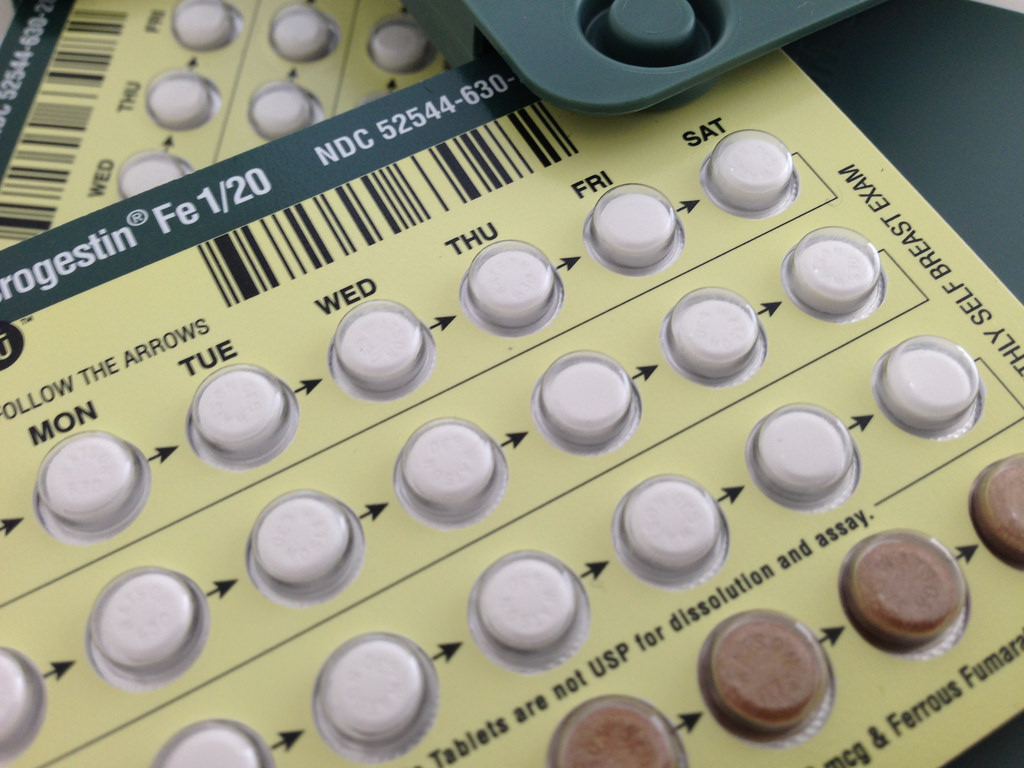Birth Control Options
When it comes to family planning and birth control options it can get overwhelming. Should you go with hormonal birth control or non-hormonal? Should the man or the woman be in charge of the birth control? Your past experiences with birth control can also affect your decision, or you may just not know what your birth control options are.
When it comes to finding out about your options you will often come to a site that is promoting one specific type of birth control, and they rarely give you all your options. Because of that I decided to share with you all the pros and cons of the different birth control options out there. If I miss one, please let me know so I can look into it, otherwise, I hope this helps you make your decision.
Abstinence
Essentially, you abstain from sexual intercourse.
Pros:
- Only 100% effective method at preventing pregnancy and STDs
- No need to remember to take a pill or purchase condoms
Cons:
- If you decide last minute that this is not for you, you may have to resort to emergency contraception
Male Condom
The male condom is what generally comes to mind when thinking about condoms. They are made of latex, polyurethane (a soft plastic), or lamb skin.
Pros:
- Protects against pregnancy and STDs, including HIV (Avoid lambskin if possible as they do not protect against STDs as well).
- Simple to use.
- Affordable.
- Widely available.
Cons:
- If you or your partner are allergic to latex you will have to find another option.
- If you tend to use oil-based lubricants (such as lotion or baby oil) you will have to switch to a water-based lubricant (such as K-Y Jelly) as the oil-based lubricants degrades the latex, making it less effective.
- Can only be used once.
Female Condom
The female condom is made of soft plastic and is inserted into the vagina before sexual intercourse.
Pros:
- Some protection against STDs.
- Can be put into place up to 8 hours before sex.
- Conducts body heat better than the male condom.
Cons:
- The male condom offers better protection against both STDs and pregnancy.
- Can be noisy.
- Should not be used with a male condom.
Diaphragm
This is a dome shaped piece of rubber that covers the cervix and prevents sperm from entering the cervix and fertilizing an egg.
Pros:
- You don’t have to remember to take a pill every day.
- Device lasts for about 2 years.
Cons:
- Must always be used with spermicide.
- You must be fitted for a new one if you lose or gain weight and after giving birth.
- You should not use it if you have a history of toxic shock syndrome or frequently get bladder infections.
- Cannot be used during your period.
Cervical Cap
This is a cap, similar to the diaphragm, but smaller, and works similarly in that it prevents sperm from traveling through the cervix.
Pros:
- Can stay in place for 48 hours.
Cons:
- High failure rate, 15% for women who haven’t had children, 30% for women who have had children.
- Must be fitted by a doctor.
- No protection against STDs.
- Cannot be used during your period
Combination Pill
This is the typical birth control pill that you think of when you think of “the pill”. It is a combination of estrogen and progestin.
Pros:
- 99% effective against pregnancy when taken at the same time every day.
- Can help with irregular periods and menstrual cramps.
- Has also been known to help with hot flashes and other PMS related symptoms.
Cons:
- Increased risk of blood clots, especially in smokers and women over 35.
- May trigger headaches in those with a history of migraines.
- May cause weight gain or other side effects.
- Does not protect against STDs.
Progestin Only Pill
This is typically called the mini-pill. It does not contain estrogen which makes this pill a better option for smokers, women over 35, and breastfeeding women.
Pros:
- Won’t decrease milk supply in breastfeeding women.
- Safer for smokers, women over 35, women with heart disease, and anyone who is prone to or at risk for blood clots.
Cons:
- Must be taken at the same time every day to be most effective.
- Does not protect against STDs.
- May have side effects.
Extended-Cycle Pill
These pills are ones that extend your cycle, meaning you only have a period once every 3 months, or once a year.
Pros:
- Only have your period every 3 months, or once a year.
Cons:
- There is no evidence proving that it is dangerous not to have periods, but there is also long-term research to prove that it is safe.
- Does not protect against STDs.
- May have side effects such as breast tenderness and weight gain.
Vaginal Ring
This is a plastic ring that is inserted into the vagina, close to the cervix, for 3 weeks, then removed for one week and replaced again once your period is over.
Pros:
- You don’t have to remember to take a pill every day.
- Lighter, more regular periods.
Cons:
- Women who smoke, have a history of blood clots, or have certain cancers should not use it.
- You have to remember when to take it out and when to put a new one in.
- Does not protect against STDs.
- May cause vaginal irritation or side effects similar to the pill.
The Patch
This is a hormone-releasing patch that can be placed almost anywhere on the body.
Pros:
- No need to remember to take a pill.
- More regular periods with less cramping.
Cons:
- You have to change it weekly.
- Does not protect against STDs.
- May cause skin irritation.
- May cause side effects similar to the pill.
- Increased risk of blood clots, especially if you smoke or are already at risk for blood clots.
Birth Control Shot
This is a hormonal injection that prevents pregnancy for up to 3 months.
Pros:
- You don’t have to remember to take a pill.
- Highly effective.
- Only given 3 times per year.
- You may not have a period with it.
Cons:
- Expensive.
- Does not protect against STDs.
- May have side effects similar to the pill.
IUD
These are devices that are surgically implanted into the uterus. Depending on the brand, you can get it with or without hormones.
Pros:
- 99% effective against preventing pregnancy.
- Good for 5-10 years, depending on brand.
- You don’t have to remember to take a pill every day.
- Low maintenance.
Cons:
- Recommended only for women who have had a child as the uterus is expanded when it is placed and can cause pain in women who haven’t had children.
- If you are planning on having children in 2 years, it is recommended that you look at other options as IUDs are expensive and when removed after a short time it is not cost effective.
- Does not protect against STDs.
- May slip out or move, so you must check the strings regularly.
Implant
This is a small plastic tube like implant, about the size of a matchstick, that is inserted under the skin in your upper arm.
Pros:
- You don’t have to remember to take a pill every day.
- 99% effective.
- Effective for up to 3 years.
Cons:
- High cost, about $800 per implant.
- May not work for women taking St. John’s Wort or overweight women.
- Must be surgically removed.
- Does not protect against STDs.
- May cause side effects similar to the pill.
Sterilization
This is a surgical procedure for men or women to prevent pregnancy. In women, the fallopian tubes are cut or blocked, in men the tubes that carry sperm are cut.
Pros:
- Permanent.
- No need to worry about taking pills, having condoms, or changing patches.
Cons:
- Permanent, if you may want children in the future, it can be reversed, but there is no guarantee that the reversal will be successful.
- There is a small chance of the surgery not being successful.
- Does not protect against STDs.
- It is a surgery, so there are risks involved just as in any surgery such as infection.
Emergency Contraception
This should not be your go-to option when it comes to contraception. If you are sexually active on a regular basis you should use a different method. This is also known as the morning after pill.
Pros:
- Can be taken after unprotected sex, may work up to 5 days after.
- Plan B is available over the counter.
Cons:
- Works best if taken within 72 hours of unprotected sex.
- Plan B is available over the counter, but you have to be 18 or older to purchase.
- Does not protect against STDs.
- May not prevent a pregnancy.
With all the birth control options out there I can see where it can be difficult to decide which one is best for you and your partner. I hope this helps you a little in making your decision.
Any birth control option missing? Let us know in comments.




